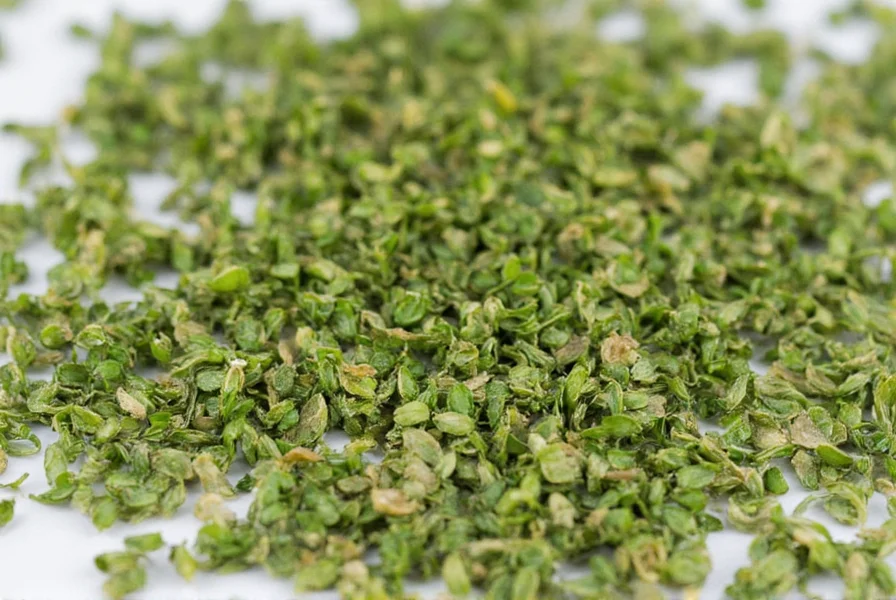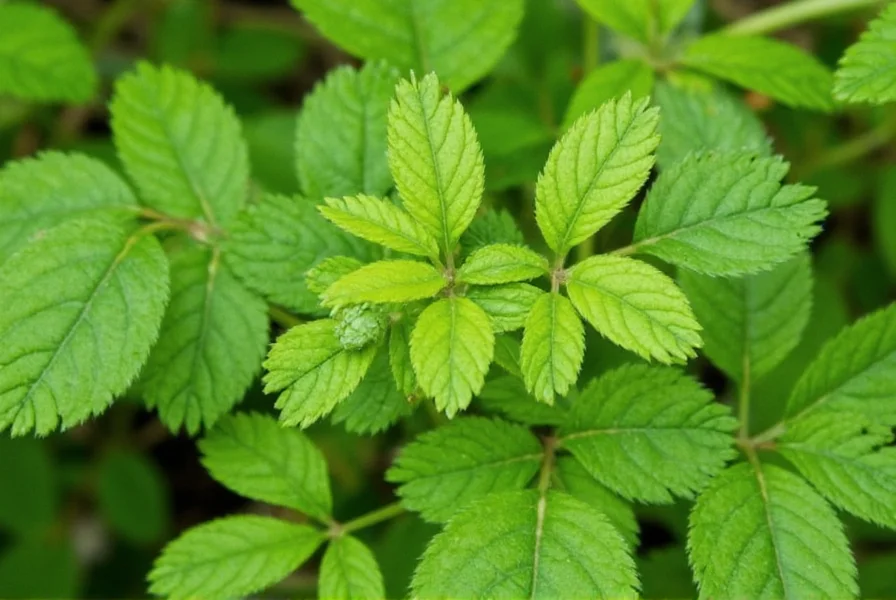Table of Contents
What Is a Chervil?
Chervil (Anthriscus cerefolium) is a delicate annual herb in the Apiaceae family, known for its subtle anise-like flavor and common use in French cuisine. Often called "garden chervil" or "sweet cicely," it's a staple in dishes like salads, soups, and sauces, yet often overlooked in favor of more robust herbs like parsley or cilantro.
Native to the Mediterranean region, chervil has been cultivated since Roman times and remains a key ingredient in classic French herb blends like fines herbes. Its feathery leaves and mild aroma make it ideal for fresh applications where delicate flavors are desired.
Chervil vs. Other Herbs: A Comparison
| Herb | Flavor Profile | Common Uses | Similar to |
|---|---|---|---|
| Chervil | Slightly anise-like, nutty, and sweet | Salads, soups, egg dishes, sauces | Parsley, fennel |
| Parsley | Mild, grassy, slightly peppery | Salads, garnishes, sauces | Chervil, coriander |
| Fennel | Anise-like, sweet, licorice | Vegetable dishes, seafood, seasoning | Chervil, dill |
As you can see, chervil shares some similarities with parsley and fennel, but its flavor is more refined and less pungent. If you're looking for a herb that adds depth without overwhelming your dish, chervil might just be your new favorite.
How to Use Chervil in Your Cooking
Chervil's delicate nature means it's best added at the end of cooking to preserve its flavor. Here are practical applications:
- Add it to salads: Fresh chervil makes a great addition to green salads, especially when paired with ingredients like avocado, tomatoes, and hard-boiled eggs.
- Use it in sauces: Chervil is a key ingredient in fines herbes, a classic French herb blend used in creamy sauces and soups.
- Top eggs: Try sprinkling chopped chervil over poached or scrambled eggs for a fresh, aromatic twist.
- Pair it with dairy: Chervil complements soft cheeses, yogurt, and even butter. It's a staple in many European cuisines.
- Use it sparingly: Since chervil has a delicate flavor, a little goes a long way. Don't overdo it!
Buying Guide: Finding the Best Chervil
Chervil is best enjoyed fresh due to its delicate flavor profile. Here's how to choose quality chervil:
Types of Chervil
- Fresh chervil: Look for vibrant green leaves without yellowing or wilting. It should have a fresh, herbaceous scent.
- Dried chervil: Less potent than fresh but convenient for soups and stews. Choose brands with no added fillers.

Where to Buy
- Local farmers' markets: Often have the freshest chervil available. Ask vendors about harvest dates.
- Grocery stores: Check the fresh herb section near parsley and basil. Look for packaged chervil with a "best by" date.
- Online retailers: Reliable for dried chervil or specialty fresh varieties. Choose sellers with high ratings and clear sourcing information.
Fun Facts About Chervil
Chervil has a rich history and unique characteristics:
- Historical significance: Romans used chervil for digestive aid and as a garnish for wine.
- Seasonal herb: It's one of the first herbs to emerge in spring and thrives in cool weather.
- Botanical name: Anthriscus cerefolium comes from Greek "anthos" (flower) and Latin "cerefolium" (parsley-like).
- Culinary role: In French cuisine, it's one of the "fines herbes" along with tarragon, chives, and parsley.

Frequently Asked Questions About Chervil
What exactly is chervil?
Chervil is a delicate annual herb belonging to the Apiaceae family, which also includes parsley, carrots, and celery. Often called "garden chervil" or "sweet cicely," it's a staple in French cuisine known for its subtle anise-like flavor with hints of licorice and a touch of nuttiness.
What does chervil taste like?
Chervil has a mild, delicate flavor profile that's slightly anise-like with hints of licorice and a touch of nuttiness. It's much milder than fennel or tarragon (which also have anise notes) and less grassy than parsley. The flavor is subtle enough that it doesn't overpower dishes but adds a sophisticated aromatic note.
How is chervil different from parsley?
While chervil and parsley look somewhat similar, they have distinct differences. Chervil has more delicate, fern-like leaves compared to parsley's curly or flat leaves. Flavor-wise, parsley has a grassy, slightly peppery taste while chervil offers a mild anise-like flavor with nutty undertones. Chervil is more delicate and loses its flavor when cooked too long, whereas parsley can withstand more heat.
Can I substitute chervil with other herbs?
Yes, but with some caveats. The best substitutes are a combination of parsley and a tiny bit of tarragon or fennel fronds (use sparingly, as these have stronger anise flavors). For fresh applications, parsley alone can work but will lack the subtle anise notes. Dill can also work in some dishes, though it has a different flavor profile. Note that no substitute perfectly replicates chervil's unique delicate flavor.
How should I store fresh chervil?
To maximize freshness, treat chervil like delicate salad greens. Trim the stems, place in a glass with an inch of water (like a bouquet), cover loosely with a plastic bag, and refrigerate. Change the water every couple of days. Properly stored, it should last 4-7 days. Alternatively, wrap it in a slightly damp paper towel and place in a plastic bag in the refrigerator's crisper drawer.
Is chervil the same as cilantro?
No, chervil and cilantro are completely different herbs. While both are used in cooking, they belong to different plant families and have distinct flavors. Cilantro (also called coriander leaf) has a bold, citrusy flavor that some describe as soapy, while chervil has a mild anise-like flavor. They're not interchangeable in recipes as they provide very different flavor profiles.
What are the health benefits of chervil?
Chervil contains vitamins A and C, along with minerals like calcium, magnesium, and iron. It has traditionally been used for digestive support and to help with respiratory issues. Like many herbs, it contains antioxidants that may help reduce inflammation. While not a miracle cure, incorporating chervil into your diet adds nutritional value along with flavor.
Can I grow chervil at home?
Yes, chervil is relatively easy to grow. It prefers cool weather and partial shade, making it ideal for spring and fall gardening. It grows well in containers or garden beds with well-draining soil. Sow seeds directly (as it doesn't transplant well) about 1/4 inch deep. Keep soil moist but not waterlogged. It will mature in 6-8 weeks, and you can begin harvesting leaves when the plant is 6-8 inches tall. Note that chervil tends to bolt (go to seed) in hot weather.
Conclusion
Chervil is a delicate herb with a subtle anise flavor that elevates dishes without overpowering them. Its rich history in French cuisine and versatility in fresh applications make it a valuable addition to any kitchen.
Whether you're a professional chef or a home cook, experimenting with chervil can bring new depth to your recipes. Next time you're at the grocery store, look for this underappreciated herb and discover how it can transform your cooking.











 浙公网安备
33010002000092号
浙公网安备
33010002000092号 浙B2-20120091-4
浙B2-20120091-4